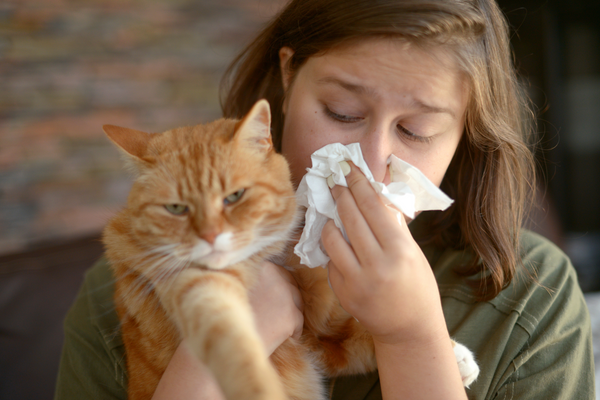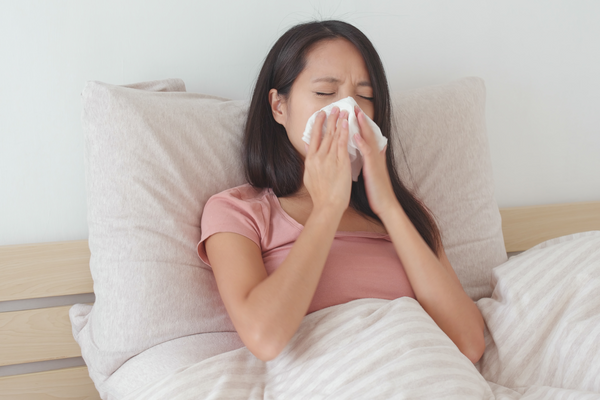How to Improve the Air Quality In Your Home

Take a moment and think about the phrase “air pollution.” What first comes to mind? Are you imagining thick plumes of smoke billowing out of factory smokestacks or vehicle tailpipes? While the rising levels of outdoor pollution, spurred by factors like fossil fuel burning, industrial exhaust gases, and vehicle emissions, are worrying enough to make you want to stay indoors as much as possible, surprisingly, household air isn’t as pristine as we’d like to believe. Although federal regulations in the U.S., including the Clean Air Act (CAA), have spurred dramatic improvements in outdoor air quality by reducing air pollutants, indoor air remains largely unregulated. Many pollutants are now more concentrated inside of our homes, offices, and other buildings than outside of them. “People think the outdoor air in cities is not that great,” says Yifang Zhu, Center for Clean Air Associate Director and Professor at the University of California, Los Angeles (UCLA). “But usually the indoor air is worse.”
It’s discomforting to realize that air pollution may be coming from inside of your home. Luckily, there are ways to keep the air inside your home clean and healthy. Read on to learn how to clear the air so that you and your family can breathe easier.
How Healthy is the Air Inside of Your Home?
On average, Americans spend about 90% of our time indoors – making indoor air a subject of significant concern. In the last several years, a growing body of scientific evidence has indicated that indoor air can be more seriously polluted than the outdoor air in even the largest and most industrialized cities. In fact, depending on a variety of factors, the air inside of your home may be two to five times – and occasionally more than 100 times – more polluted than the air outside. According to the American Lung Association, poor indoor air quality (IAQ) can worsen asthma and allergies and contribute to the development of infections, lung cancer, and chronic lung disease.
What Causes Indoor Air Pollution?
The most common sources of indoor air pollution include asbestos, carbon monoxide emissions from central heating systems and gas stoves, radon, bacteria and viruses, allergens like mold, pet dander, and dust mites, and volatile organic compounds (VOCs) found in household items like harsh chemical cleaning products, air fresheners, scented candles, paint, carpeting, adhesives, pesticides, and wood preservatives.
Inadequate ventilation can also contribute to indoor air pollution by trapping the allergens and pollutants inside and keeping the outdoor air from diluting emissions caused by the pollutants, says the Environmental Protection Agency (EPA). "High temperature and humidity levels can also increase concentrations of some pollutants," the EPA adds.
"Living near a busy road can also affect the indoor air quality as the pollutants from car exhaust can enter your home," says Dr. Payel Gupta, assistant clinical professor at SUNY Downstate Medical Center, Brooklyn, and spokesperson for the American Lung Association.
How Can You Improve the Air Quality Inside Your Home?
Toxic indoor air has become a serious global problem, but the good news is that it can be effectively managed with the right tools and techniques. Here are a few simple ways to clean up the air in your home:
Eliminate Mold
Whether it's the slimy black spots on your basement walls or the slick orange film that forms around the bathtub, household mold is more than unsightly. Mold is known as a major indoor air pollutant, alongside carbon monoxide, asbestos, and cigarette smoke. The best way to prevent a mold infestation inside your home environment is to manage the humidity levels, particularly in damp areas like the kitchen, bathroom, laundry room, and basement. But even with preventative measures, mold infestations are still widespread in households worldwide. The biggest issue with out-of-control growth is that mold shoots invisible allergens into the air, causing wheezing, sniffling, skin rashes, and eye irritation. Mold poses even more risk for those with underlying conditions, triggering asthma attacks, exacerbating chronic obstructive pulmonary disease (COPD), and sometimes causing fungal infections in immunocompromised individuals.
If your home has a mold infestation, tackle it as soon as possible. If the mold-affected area is small (10 feet square or less), you can probably handle it yourself, but a larger one will demand professional help. When faced with a mold problem, reach for a product that will destroy mold from its roots. Vital Oxide is a powerhouse mold killer that eliminates mold and mildew on a molecular level, without harsh chemicals or noxious fumes. Instead, Vital Oxide harnesses the power of oxygen – in the form of stabilized chlorine dioxide – to stop mold growth on hard and soft surfaces by penetrating and destroying tough mold, mildew, and bacteria at its source. Vital Oxide has a residual effect on mold and mold spores for up to one month on fabrics and one week on hard surfaces with a single treatment.
Related: The Top 5 Myths About Mold Removal, Debunked
Monitor Radon Levels
Radon is a naturally occurring radioactive gas. According to the EPA, inhaling radon is the leading cause of lung cancer among non-smokers and the second most common cause of lung cancer in general. Since radon is colorless and odorless, testing is the only way to determine and reduce radon levels inside of your home.
Reduce Dust Mites
Not only are dust mites the most common indoor allergen, but they’re also a major contributor to indoor air pollution. According to the American Lung Association, chronic, ongoing exposure to dust mites at home can dramatically impact the health of people with asthma as well as those who are allergic or particularly sensitive to mites.
To remove and control dust mites in bedding, wash your mattress cover, sheets, pillowcases, and blankets with an Anti-Allergen Laundry Detergent at least once weekly. While your bedding is in the washer, vacuum your bed pillows, mattress, and decorative pillows with a HEPA vacuum and then spray liberally with DustMiteX to kill dust mites. Let your mattress and pillows air dry while your bedding is in the washer. While you’re at it, plan to wash pet beds and washable area rugs weekly, and vacuum any non-washable rugs, carpeting, and upholstery with a HEPA vacuum.
Related: How to Easily Reduce Dust Mites in Your Home
Let Some Fresh Air In
Ventilation is one of the easiest and most effective ways of dealing with indoor air pollutants, especially carbon dioxide. Even in the colder months, open the windows and turn on fans daily to allow fresh air to move into the house. Adding just a few gusts of outdoor air every day can help to dilute air pollutants inside your home. However, if you live near a highway or busy road, avoid opening your windows during traffic rush hours.
Groom Your Pets Regularly
Pet dander is another common culprit behind indoor air pollution. If you're a pet parent, make sure you properly brush your pet's coat regularly and bathe them with an Anti-Allergen Pet Shampoo to remove allergens, dirt, and dust from their fur. Our Anti-Allergen Pet Shampoo neutralizes allergens in pet dander and dust mite allergens, while cleaning and conditioning for an extra-soft, fresh-smelling coat. The 100% biodegradable plant and mineral-based formula also makes our pet shampoo an environmentally-friendly choice.
Invest in an Air Purifier
Using air purifiers is another effective way to tackle stale indoor air. Air purifiers can go a long way to freshen and clean the air in commonly used rooms like the living room, kitchen, and bedrooms. Here's the EPA guide on how to choose the right air purifier for your home.
P.S. If you have a forced-air heating and cooling system, it's essential to change the filters regularly. Additionally, using a high-performance air filter can help to trap fine particulates and airborne allergens.
Reduce VOCs
Numerous harsh chemicals fall into the catchall term volatile organic compounds or VOCs. This class of chemicals can be “off-gassed” or emitted as gases and negatively impact our health as they pollute indoor air quality. VOCs are found in household products such as paints, conventional cleaning products and disinfectants, air fresheners, laundry products, and even furniture and flooring.
Some examples of VOCs found in household products are fragrance chemicals, chloroform and methyl chloroform (found in common household bleach and off-gassed during use), formaldehyde (used in furniture and floor cleaning sprays), and d-limonene and α-pinene (found in many conventional multi-purpose cleaners). Exposure to these VOCs can pollute the air inside of your home and cause a laundry list of adverse health effects. Short-term, inhaling high levels of VOCs can cause eye and throat irritation, nausea, headaches, and dizziness; long-term, it’s linked to cancer and damage to the nervous system, liver, and kidneys.
One of the best defenses is to keep VOC levels low in the first place by looking for “low- or no-VOC” or “low formaldehyde” labels when shopping for household products like paint, couches, mattresses, and wood products. If a new purchase has that sickly chemical smell? Put it in a garage or on a patio to let it off-gas for a few days.
You can further combat indoor air pollution by avoiding conventional cleaning and laundry products, as well as air fresheners and other synthetically-scented products. Our all-in-one cleaner, sanitizer, and disinfectant product, Vital Oxide, will replace all of your current household cleaners; Vital Oxide is VOC-free and ideal for everyday use around the home. When it’s laundry day, reach for a detergent that’s free from synthetic fragrances, optical brighteners, and other harsh chemicals – and try swapping VOC-loaded softeners and dryer sheets for all-natural wool dryer balls instead.

Have questions about reducing allergens inside your home? We have answers! The Ecology Works has been helping folks with asthma and allergies since 1993. We can help you select the products you need to live a better, allergen-free life. Check out our Instagram for more allergen-reducing tips. Need more help? Please feel free to Contact Us or message us on Facebook. No question is too small! We're here to help.




